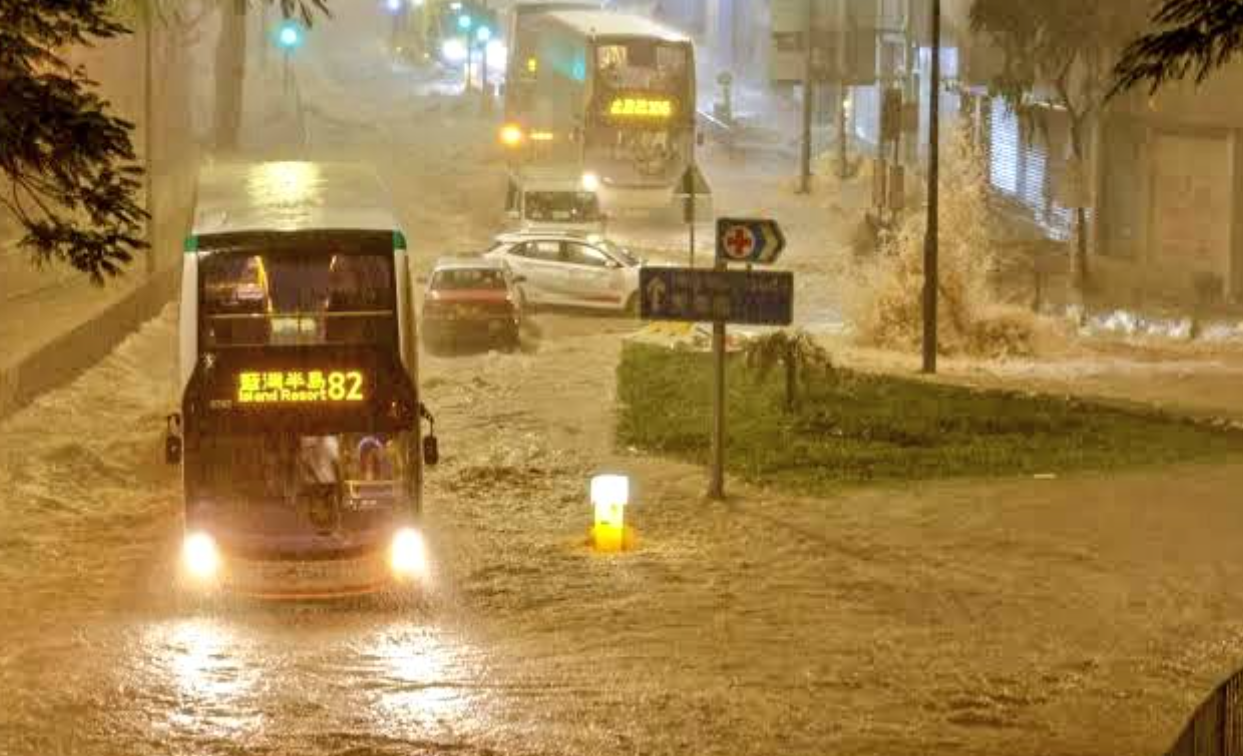In one of the worst natural disasters to hit China in recent years, the China Floods 2025 have claimed the lives of at least 40 people and forced over 1 lakh residents to evacuate across Beijing, Hebei, Jilin, Shandong, and Shaanxi provinces. Torrential rains dumped nearly a year’s worth of precipitation in just a few days, overwhelming rivers, collapsing roads at over 30 locations, and cutting power to more than 130 villages. Beijing’s Miyun district alone received over 573 mm of rainfall, flooding hospitals, submerging roads, and halting air and rail travel. Experts link the disaster to intensifying climate change impacts, as authorities brace for more extreme weather ahead.
China Floods 2025: 40 Dead, 1 Lakh Displaced as Record Rains Submerge Beijing
China is once again in the grip of a natural disaster, as relentless torrential rains have triggered catastrophic flooding across several regions, including the national capital, Beijing. This summer’s floods are being described as a “once-in-a-hundred-years” event, with destruction and human suffering on an unprecedented scale.
China Floods 2025:Over the past several days, heavy rainfall has pounded China floods northern and eastern provinces, particularly affecting the regions of Beijing, Hebei, Jilin, Shandong, and Shaanxi. The crisis has left close to 40 people dead, with many others still missing. Emergency response teams are scrambling to rescue stranded residents, while ongoing evacuation efforts have already displaced more than 100,000 people from flood-stricken zones.
China Floods 2025:In Beijing, especially in the suburban district of Miyun, the impact has been especially severe. Miyun alone recorded 573.5 mm of rainfall—almost equal to the city’s average annual rainfall of 600 mm. The result: entire neighborhoods submerged, 60 roads underwater, and public services heavily disrupted. Tragically, at least 30 people have lost their lives in the Beijing region, with 28 deaths reported in Miyun and two in nearby Yanqing.

China Floods 2025:Eyewitness videos have captured alarming scenes, such as helicopters landing in flooded residential areas to evacuate residents. A hospital in the Miyun district was overrun by floodwaters, with levels reaching above the knees and rising. Electricity has been knocked out in more than 130 villages, while 41 rivers have overflowed, destroying roads, homes, and power infrastructure.
China Floods 2025:In the Wuqiu region of Shaanxi province, 251 mm of rain fell in just 12 hours, resulting in the worst flood of the Beiluo River in 30 years. Streets, bridges, and homes have been washed away, and water levels in some areas have surpassed six feet.
China Floods 2025:Public transport in Beijing remains one of the few functional systems amid the chaos. A traveler shared, “This kind of weather is not particularly safe. Heavy rain can wash away land. But I feel the subway is still the safest way to travel.”
The heavy downpour, which peaked around July 28, has caused the collapse of roads in over 30 locations, while hundreds of flights at Beijing Capital International Airport were canceled. Rail services were also significantly disrupted.
Experts point to climate change as a contributing factor behind these extreme weather patterns. With Beijing receiving nearly a year’s worth of rainfall in just a few days, concerns are growing over the increasing frequency of such climate events in China—from devastating heatwaves to deadly floods.
President Xi Jinping and top Chinese officials have urged citizens to stay alert and brace for further worsening conditions. The meteorological department has issued fresh flood alerts, warning that more rain is expected in the coming days.
While China has been praised globally for its rapid infrastructure growth and disaster response mechanisms, the current crisis has exposed the limitations of even the most developed systems when faced with the sheer force of nature.
This disaster is a stark reminder that no nation—superpower or not—is immune to the wrath of the natural world.

